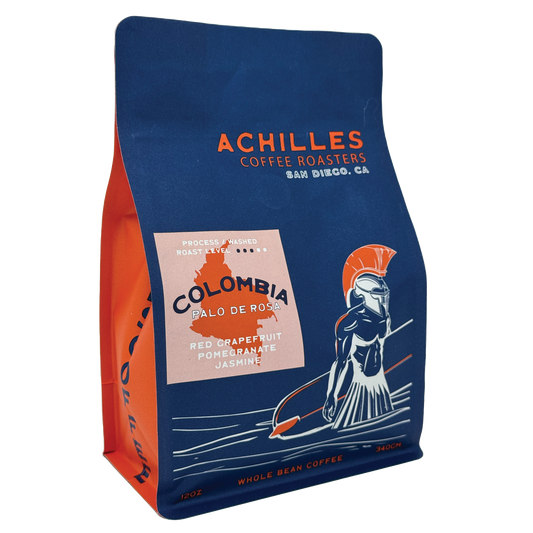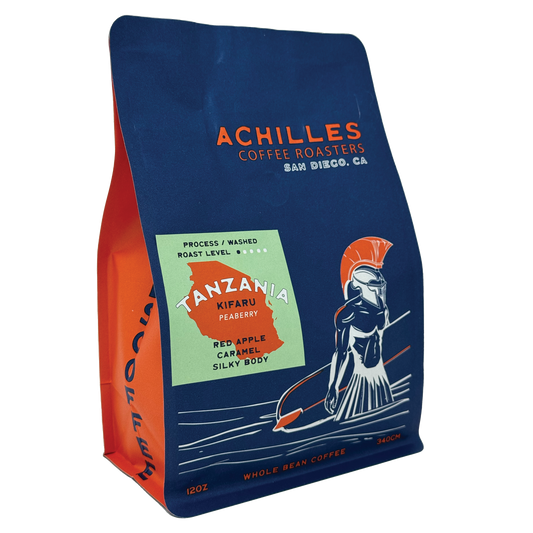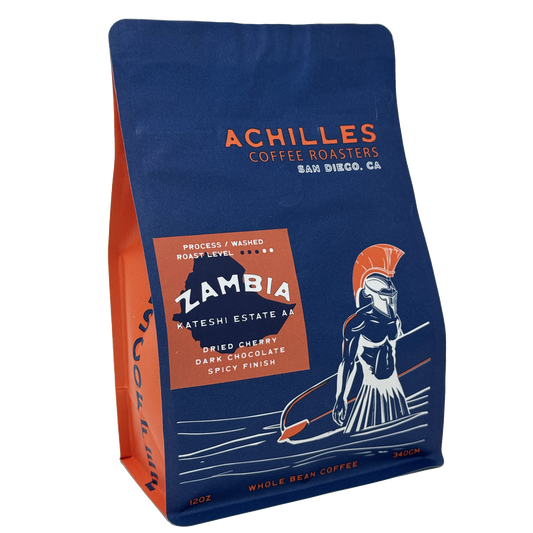In the world of espresso, small variables can make a big difference. One of the most overlooked, yet essential, tools in crafting a perfect shot is the coffee scale. In this comprehensive guide, we’ll explore why weighing your espresso shots matters, how it impacts flavor, and how you can easily integrate precision into your daily coffee ritual at home.
Whether you’re just starting your home barista journey or fine-tuning your setup, this article will help you level up your espresso game.
Why Weighing Your Espresso Shots Is So Important
Consistency Is Key
If there’s one principle that defines great espresso, it’s consistency. When you scoop your coffee or rely on visual estimates, you introduce unpredictable variables into your process. Even a one-gram difference in dose or a slight change in your yield can lead to noticeable differences in flavor, extraction time, and overall balance.
Weighing your dose (coffee in):
Your dose refers to the amount of dry coffee you place into the portafilter. Most espresso shots use between 16 to 18 grams, but the ideal dose depends on your machine, basket size, and the coffee itself. Eyeballing this amount using a scoop or just “going by feel” can easily lead to under-dosing or over-dosing. This throws off the balance of water-to-coffee contact and results in inconsistent extraction.
By weighing your dose with a digital scale accurate to 0.1g, you can ensure the right amount of coffee is used every time. This leads to more predictable water flow through the puck, better saturation, and even extraction from shot to shot.
Weighing your yield (coffee out):
Your yield refers to the amount of espresso that ends up in your cup, measured by weight—not volume. Measuring by volume (like fluid ounces or milliliters) can be misleading due to variations in crema. A consistent brew ratio—such as 1:2 (e.g., 18g in, 36g out)—helps ensure you’re getting the right strength and flavor balance.
For example, pulling a 36g shot from an 18g dose will taste very different from a 45g shot with the same dose. The former may be richer and more syrupy, while the latter could be thinner and more acidic. Without measuring, you’ll have no way to reliably reproduce the result you enjoyed.
Why consistency matters:
Precision in both dose and yield eliminates guesswork. It lets you:
-
Control extraction time
-
Dial in brew strength
-
Maintain flavor balance across sessions
-
Reduce waste and time spent troubleshooting
A good espresso scale lets you monitor both variables in real time. Set your portafilter on the scale to weigh your dose, and place your cup on the same scale while brewing to monitor yield. Over time, this habit builds repeatability and makes it much easier to dial in new coffees or troubleshoot off-flavors.
If you're investing in a quality machine and grinder, don’t cut corners with your process. Accurate dosing and yield measurement are what turn great equipment into great espresso.
Better Flavor Through Precision
Espresso is one of the most sensitive and concentrated brewing methods in coffee. Because the water-to-coffee ratio is so tight and the contact time is so short, even the smallest change in input or process can produce noticeable shifts in flavor. This is why precision—especially in weighing your dose and yield—is critical for producing a balanced, enjoyable shot.
A well-extracted espresso contains a delicate harmony of sweet sugars, bright acids, and mild bitters. When your process lacks precision, you disrupt this balance and create less-than-ideal results.
Avoid under-extraction:
Under-extracted espresso happens when water passes through the coffee too quickly or doesn’t have enough contact time to dissolve the desirable flavors. This can occur when your dose is too low, your grind is too coarse, or your yield is too small. The result is usually a thin body with sharp acidity, a sour finish, and muted sweetness. Weighing your inputs and outputs helps you identify and correct these issues quickly.
Avoid over-extraction:
Over-extraction occurs when the water pulls too much from the coffee grounds—often due to a fine grind, a long brew time, or a yield that’s too large. This draws out bitter, dry compounds that mask sweetness and complexity. The espresso may taste harsh, astringent, or burnt. By precisely measuring your dose and controlling your yield, you can prevent over-extraction and stay in the ideal flavor zone.
Hit the sweet spot:
The best espresso balances flavor compounds so that no single element dominates. You get a layered, nuanced experience—rich crema, deep sweetness, pleasant acidity, and a clean, satisfying finish. That balance is only achievable with repeatable control over the core variables. Weighing your dose and yield gives you a clear, measurable path to get there consistently.
Precision doesn't just make you a better barista—it lets your coffee shine. The flavors roasters work hard to preserve during processing and roasting only emerge when the brewing process is equally deliberate. If you want to taste the full character of your beans, precision isn't optional—it's essential.
Faster Dialing In
Dialing in your espresso setup—whether you're working with a new bag of beans, adjusting your grinder, or fine-tuning your machine—can be a time-consuming and often frustrating process without consistent metrics. Relying on taste alone may work over time, but it's highly subjective and slow. Using a scale to weigh both your dose and yield gives you reliable, repeatable data points that allow for faster and more informed adjustments.
Dose (e.g., 18g):
By keeping your dose consistent, you isolate other variables like grind size and yield. If you’re always starting with, say, 18 grams of coffee in the portafilter, then you know that any changes in flavor are due to extraction—not inconsistent input.
Yield (e.g., 36g):
Tracking the amount of espresso that ends up in the cup lets you work with brew ratios—such as 1:2 (18g in, 36g out)—to standardize your approach. If a shot tastes off, you can adjust your yield in small increments and compare results without starting over from scratch.
Brew time (e.g., 28 seconds):
When you pair dose and yield with extraction time, you get a complete profile of how your espresso is pulling. For example, if your shot runs too fast (under 20 seconds), you might grind finer. If it takes too long (over 35 seconds), a coarser grind might help. These changes become far more effective when guided by numbers rather than guesswork.
By weighing each shot and logging this data, you build a reference system that helps you troubleshoot quickly and replicate your best results. You’ll waste less coffee during testing, make faster progress when switching beans, and gain confidence in your ability to adapt to subtle changes like coffee age, humidity, or machine behavior.
Precision tracking turns dialing in from a vague, trial-and-error process into a structured, efficient method. The result is better espresso, more consistently, with less time and product wasted along the way.
Key Terms to Know
Before diving deeper into brewing precision and technique, it's important to understand a few foundational terms. These are the building blocks of consistent espresso-making, and having a clear grasp of them will make dialing in your shots faster, more intuitive, and far less frustrating.
Dose:
The dose is the weight of the dry, ground coffee you place into your portafilter before extraction. For a double shot, this typically ranges from 16 to 20 grams, depending on your basket size, coffee roast level, and machine design. The dose affects everything from flow rate to extraction time and is the first variable you should lock in when calibrating your espresso.
A consistent dose ensures you’re applying the same amount of coffee to each shot, making it easier to identify what other adjustments—such as grind size or yield—need to be made.
Yield:
The yield refers to the weight of the brewed espresso that ends up in your cup, not the volume. This is measured in grams using a scale, because crema and other variables can make liquid volume misleading. Yield is the result of how much coffee you extract from your dose, and it plays a critical role in determining strength, flavor concentration, and mouthfeel.
Depending on the style of espresso you're aiming for, your yield might vary. For a traditional double shot, a common yield target is around 32 to 40 grams.
Brew Ratio:
The brew ratio is the relationship between the dose (coffee in) and the yield (coffee out), and it's often expressed as a simple ratio. The most common starting point for espresso is 1:2, which means for every gram of coffee in the portafilter, you aim for two grams of espresso in the cup.
This ratio helps you standardize your brewing process and gives you a reliable framework for making adjustments based on taste. A tighter ratio like 1:1.5 might produce a richer, more intense shot, while a ratio of 1:2.5 could yield a lighter, more acidic profile.
Example:
If you use an 18g dose of ground coffee and your yield is 36g of liquid espresso, your brew ratio is 1:2. This is a balanced starting point for dialing in most medium and light roast coffees.
What Happens When You Don’t Weigh Your Shots?
Choosing not to weigh your espresso shots may seem harmless at first—especially if you’re following visual cues or using the same scoop every day—but it introduces major inconsistencies into your brewing process. Without objective data, your ability to improve, troubleshoot, or repeat a great shot is seriously limited.
Your dose varies daily, even if you think you’re being consistent:
Using a scoop or filling the portafilter "by eye" might feel consistent, but in reality, it’s unreliable. Variations in grind size, bean density, and how the grounds settle can easily cause your dose to swing by one or two grams. That small change is enough to alter how water flows through the puck, leading to under- or over-extraction and shifting flavor profiles. What tasted great yesterday might taste weak or harsh today—and you won’t know why.
Your yield fluctuates, which affects strength and flavor:
If you don’t weigh your yield, you’re guessing at how much espresso is in the cup. Judging by volume is especially misleading due to crema, which can give the illusion of more liquid than is actually there. This inconsistency results in unpredictable strength and balance—some shots may be too intense and others too dilute, with no clear reference point to adjust from.
Adjusting your grinder becomes guesswork:
Dialing in your grind requires knowing exactly what’s happening in your shot—how much coffee you used, how much you extracted, and how long it took. Without accurate weight measurements, changing your grind size becomes random trial and error. You’ll struggle to identify whether the problem lies in the grind, dose, or yield, and you'll waste time and coffee in the process.
You’ll waste more coffee trying to “fix” things blindly:
Troubleshooting bad shots without hard data is frustrating and inefficient. You may end up pulling multiple shots, changing multiple variables at once, and still not arriving at a better result. By weighing your shots, you create a controlled environment where you can isolate one variable at a time and make intentional, informed adjustments.
How to Weigh Your Espresso at Home
Dialing in a consistently excellent shot of espresso starts with using a scale to control and track your key variables: dose, yield, and time. The good news is that weighing your shots is simple once you develop a repeatable workflow. Here’s how to incorporate precision into your routine:
1. Weigh Your Dose
Place your portafilter on your digital scale and press tare to zero out the weight. This allows you to measure only the weight of the coffee you add.
Grind your coffee directly into the portafilter. As the grounds fill up, pause to check the weight and adjust accordingly. Your target dose will vary depending on your espresso basket and the style of shot you’re aiming for. A typical starting point for a double shot is 18.0 grams.
Once you’ve reached your desired dose, gently level the grounds using your preferred distribution method, such as tapping the side of the portafilter, using a distribution tool, or finger-swirling. Then tamp evenly and firmly.
Some baristas prefer to dose slightly above the target (e.g., 18.2g) and then level off the excess with a straight edge for maximum precision. This ensures a flat, even puck surface and exact dose.
2. Weigh Your Yield
Place your espresso cup on the scale, set it under the portafilter, and tare the scale again.
Start your shot and simultaneously start the scale’s built-in timer (or use a separate stopwatch). As the espresso begins to flow, watch the weight increase on the scale.
Stop the shot when you reach your target yield—typically twice the weight of your dose. For an 18g dose, you might aim for a 36g yield, giving you a 1:2 brew ratio. This ratio is a reliable starting point for a well-balanced espresso and can be adjusted later based on taste preferences.
Weighing your yield ensures that you’re not under- or over-extracting, and it gives you complete control over shot strength, body, and flavor.
3. Adjust Based on Results
Once you’ve pulled your shot, evaluate both the numbers and the taste.
If the brew time is too fast—say, under 20 seconds—it likely means your grind is too coarse or your tamp is too light. Try grinding finer or applying a bit more pressure during tamping to slow down the extraction.
If the brew time is too slow—over 35 seconds—you may be grinding too fine or tamping too hard. Coarsen the grind slightly or use a lighter tamp to improve flow rate.
If the taste is off—sour, bitter, or unbalanced—it might not be an issue of time alone. Consider revisiting your brew ratio. Try changing the yield by a few grams up or down, or slightly adjusting the dose. Small changes, such as moving from a 1:2 ratio to 1:2.2 or 1:1.8, can dramatically affect the flavor and mouthfeel of the shot.
Always make one adjustment at a time and take notes. Keeping track of dose, yield, time, and taste allows you to build a clear picture of what works with each coffee.
By following this method, you create a system of measurable control. You’ll develop the ability to repeat great results and troubleshoot bad ones quickly. More importantly, weighing your espresso shots gives you confidence and clarity in every step of the process—bringing professional-level quality to your home setup.
Common Espresso Brew Ratios
|
Style |
Brew Ratio |
Notes |
|
Ristretto |
1:1 - 1:1.5 |
Short, intense |
|
Normale |
1:2 |
Balanced, classic |
|
Lungo |
1:3+ |
Milder, more volume |
👉 For beginners, start at 1:2 and explore from there.
Tips for Better Weighing at Home
Mastering the habit of weighing your espresso shots doesn't require expensive tools—just attention to detail and consistency. The following tips will help ensure accurate readings and a smoother workflow, all while preserving the longevity of your gear and making your home espresso routine more enjoyable.
Pre-warm your cup to avoid false readings:
Temperature fluctuations can affect scale sensitivity. A cold cup placed on the scale can cause condensation or thermal shock, leading to minor weight fluctuations that throw off your yield readings. To prevent this, run hot water through your cup before placing it on the scale. Not only does this help the scale give more accurate readings, but it also keeps your espresso warmer for longer once brewed.
Use the same cup every time for consistent scale readings:
Each cup has its own weight—even small variations between cups can introduce inconsistencies in tare measurements. By using the same cup every time you weigh your espresso yield, you eliminate this variable and reduce the chance of accidental misreads. This also helps build a more repeatable routine, making it easier to compare results across different sessions.
Keep your scale clean and dry to preserve accuracy and extend its life:
Espresso brewing can get messy—water splashes, coffee grounds, and steam can all interfere with your scale’s sensors or corrode its surface. Make it a habit to wipe your scale clean after each use and keep the weighing platform dry. If possible, use a silicone mat or protective cover to shield it from moisture and heat. A well-maintained scale stays more responsive and accurate over time, especially with daily use.
Practice regularly—precision gets easier with repetition:
At first, weighing every shot might feel like an extra step or even slow down your routine. But with repetition, it becomes second nature. You’ll start to recognize doses by feel, anticipate your yield target more instinctively, and streamline your workflow without sacrificing accuracy. Like tamping or steaming milk, weighing is a skill—one that pays off in flavor, consistency, and confidence.
Conclusion
Weighing your espresso shots is one of the simplest ways to elevate your coffee experience at home. From dialing in new beans to perfecting your favorite recipe, a reliable scale helps you achieve consistency, unlock better flavors, and truly enjoy the art of espresso.








